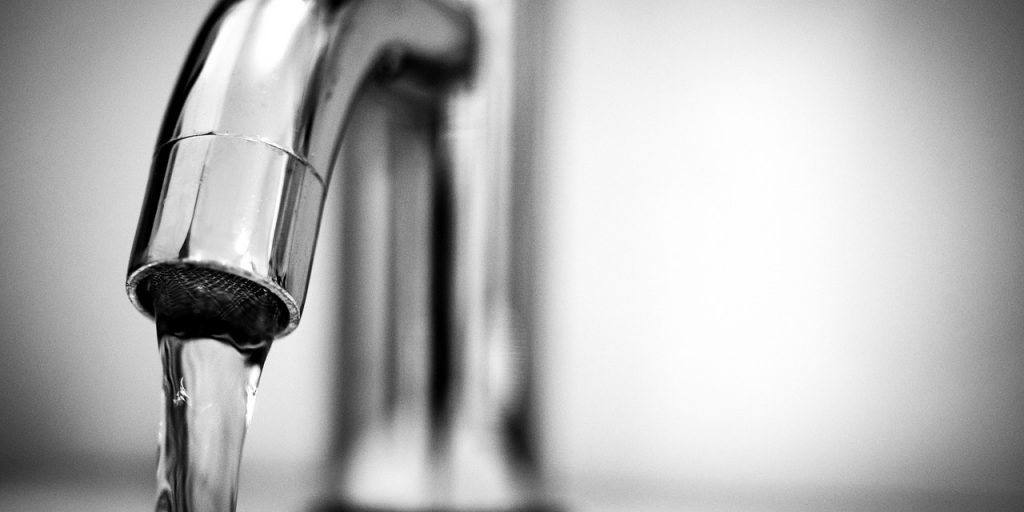3 ways to make clean water affordable in America’s smallest communities
Water might not seem like a scarce resource, but drinking water is becoming a serious financial hardship for Americans in small towns across the country.
Consider Martin County, Kentucky, where roughly half the citizens lack affordable, reliable water service. Despite residents suffering multiday water outages and quality issues, the average water bill was among the top 10 priciest of the state’s 141 regulated districts.
It’s not difficult to see how and why small communities are hit the hardest. The cost of water is divided among fewer people, and smaller population density makes water less affordable. And these populations are shrinking: Since 1950, 35% of rural counties have lost one-third of their population — and costs continue to rise as fewer people share water services.
Underfunded systems also endanger water safety. For example, nationwide testing compiled by the Environmental Working Group identified at least 1,155 communities without systems for removing the unacceptable levels of nitrate — a contaminant linked to cancer — found in their drinking water. Nitrate removal systems are costly, but especially for small communities with household incomes below the national average. It’s unsurprising that according to the same EWG reporting, 60% of water systems showing elevated nitrate serve 500 or fewer residents. The organization estimates that removing nitrate in these very small communities would cost $765 million nationally and add hundreds of dollars to affected consumers’ water bills.
This is obviously unsustainable — but there’s an opportunity to take legislative action to lower costs and provide quality water service for small-town residents.
Three policy measures that can make water affordable for rural communities
- A water trust fund. Public trust funds have played a vital role in our country; they support highways, airports, and other public resources. The AARP Public Policy Institute found that a water trust fund could channel money to water utilities to allow infrastructure enhancements and offset costs.
Establishing water trust funds now could lay the foundation for a potentially uncertain future relative to water supply and quality management. A distinct fund focusing on clean, safe, and affordable water supply would help resource-strapped communities and lower-income households.
- Support increased federal funding. In terms of ensuring affordable, clean water for everyone, federal funding is currently far from sufficient. The Environmental Protection Agency estimates that in 2019, the federal government allocated less than half a percent of what’s necessary to shore up America’s water infrastructure. State and local governments should work to secure increased funding from federal sources.
An appropriate allocation of federal funding requires supporting communities that cannot afford full (or even partial) private financing. Given that underfunding results in increased pollutant levels for vulnerable rural populations, this is an important matter of justice and sustainability. Two acts passed in 2017 — the Low-Income Water Consumer Assistance Programs Act of 2017 and the Securing Required Funding for Water Infrastructure Now Act of 2017 — are beginning to close the funding gap, but we still have a long way to go.
- Regionalization. Many rural areas that cannot afford effective water systems on their own can solve this problem by partnering with neighboring communities. This approach spreads costs over a larger population, which reduces costs for the smallest rural municipalities. Though it’s by no means a universal solution, it can work very well for those communities that can navigate logistical and local political hurdles.
This solution is already working: the Lowcountry Regional Water System, a consortium of five small towns in South Carolina, is improving water service for the region. Instead of privatization — and working to attract and keep investors to build new water treatment facilities — neighboring towns can share the costs of treatment, delivery, and administration over a larger area. By spreading costs across more households, individuals gain relief from steep water bills. At the very least, this solution tempers what could otherwise be an unaffordable future.
Our small communities and agricultural regions are a vital part of the national cultural experience and economic success, and the people living there deserve reliable access to clean, affordable water. We can and should restructure how water service is funded from the federal to the regional level. By doing so, we can enjoy a future in which paying the monthly water bill isn’t a hardship for any American.
Chris Shaffner is the senior vice president of the Water and Community Facilities division at CoBank, a national cooperative bank serving vital industries across rural America by providing loans, leases, export financing, and other financial services in all 50 states. Chris oversees the strategic growth and management of CoBank’s water infrastructure lending, rural healthcare investments, and rural equity funds.



















